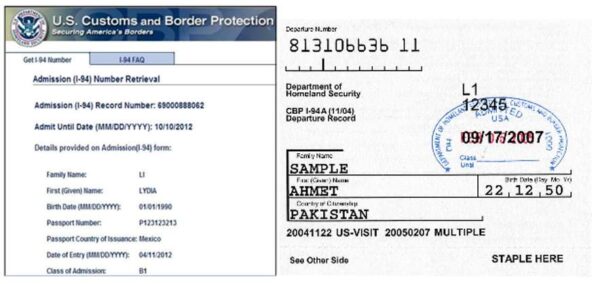This sponsored column is by Law Office of James Montana PLLC. All questions about it should be directed to James Montana, Esq., Doran Shemin, Esq., and Janice Chen, Esq., practicing attorneys at The Law Office of James Montana PLLC, an immigration-focused law firm located in Falls Church, Virginia. The legal information given here is general in nature. If you want legal advice, contact us for an appointment.
Any of us who have ever applied for a job know the joyous feelings of filling out paperwork. Then, if you actually get the job, then there’s usually even more paperwork.
Part of that paperwork includes the Form I-9.
The Form I-9 is a Department of Homeland Security form that employers request new employees to complete to show that the employee is authorized to work in the United States. The purpose of the completed form and the documents submitted along with it are two-fold: (1) to establish the employee’s identity and (2) establish the employee’s authorization to work in the United States.
The tricky part usually arises when it’s time for the employee to show the document or documents that establish her identity and authorization to work. To satisfy these requirements, there are lists of various acceptable documents. Some documents, referred to List A documents, establish both identity and authorization to work. Prime examples are U.S. passports, green cards, and work permits.
In the alternative, employees can show a combination of documents from Lists B and C. List B documents establish identity. The most common List B document is a state-issued ID or driver’s license. List C documents establish work authorization. One of the most common ways to establish work authorization is presenting an unrestricted social security card; this means that the card does have any notations on it indicating that the social security card has to be presented with another particular document, like a work permit.
The reason this becomes tricky is because many employers do not fully understand the rules regarding the I-9 and the acceptable documents a worker can present. Employers are absolutely not permitted to dictate which documents a worker must present to satisfy the I-9 except in extremely limited circumstances, like federal government employment or a job involving federal contracts that require that workers be U.S. citizens or green card holders.
If any of those exceptions do not apply, the worker gets to decide which documents to present. Employers are not permitted to demand that a person submit a specific document; doing so could result in a charge of document discrimination.
Document discrimination is prohibited under the Immigration and Nationality Act, 8 USC § 1324b(a)(6). Here are some common scenarios in which we see employers request documents when it is inappropriate to do so:
(1) Jane has a work permit because she has a pending green card application. Jane filed to renew her work permit before her current one expired. Jane also received the official receipt noting that she timely filed her work permit renewal application, and the receipt states that she has an automatic 540-day extension even if her current work permit is facially invalid. Thus, she is permitted to work as long as she presents her expired work permit along with the official receipt.
Jane applies for and gets a new job right after her work permit expires. When she arrives for her first day of work, she fills out the I-9 and provides her documentation. But the employer tells her that the expired work permit plus the receipt notice is unacceptable. The employer then demands a valid work permit card.
The employer in Jane’s case is in the wrong here and is (intentionally or unintentionally) discriminating against Jane based on her documentation. Employers must be aware of the rules regarding expired documents plus receipts, and the Form I-9 itself even states that the I-9 instructions address acceptable receipts as proof of work eligibility.
(2) John has an E-2 visa. With this type of visa, his I-94, which is his official entry record, is automatic proof that he is authorized to work in the United States. John gets a new job and presents his I-94, which he printed off the Customs and Border Protection website (see left image below).
The employer, however, demands to see the physical square paper that John was given at the airport (see right image below). But John never got that because most I-94s are issued online now. The employer refuses to let John begin work if he does not present an I-94 like the one on the right.
Again, the employer is in the wrong. Employers must accept facially valid documents and cannot demand to see one type or version of a document over another.
It is important for employers to be up-to-date regarding acceptable I-9 documents to avoid making these types of mistakes. Complaints can lead to investigations and charges of discrimination, which can then lead to thousands of dollars in civil penalties.
We encourage both employers and workers to learn more about this important topic and seek advice from an attorney or government entities to ensure that they understand their rights and responsibilities. If you are an employer reading this article and have additional I-9 questions, we would encourage you to read the I-9 Handbook for Employers, which you can find here.
If you believe that you have been discriminated against based on documents you presented to your employer, you can report the incident to the Department of Justice, Civil Division, Immigrant and Employee Rights Section. You can file a charge online or call their Worker Hotline at 1-800-255-7688 Monday through Friday, 9 a.m.-5 p.m. Eastern Time. They offer assistance in various languages and complaints can be anonymous.
As always, we welcome your comments and will do our best to respond.




